Unlocking the Power of Data: How PostHog Became My Go-To Analytics Tool for SaaS Success
Discover the power of PostHog, an all-in-one analytics tool for SaaS

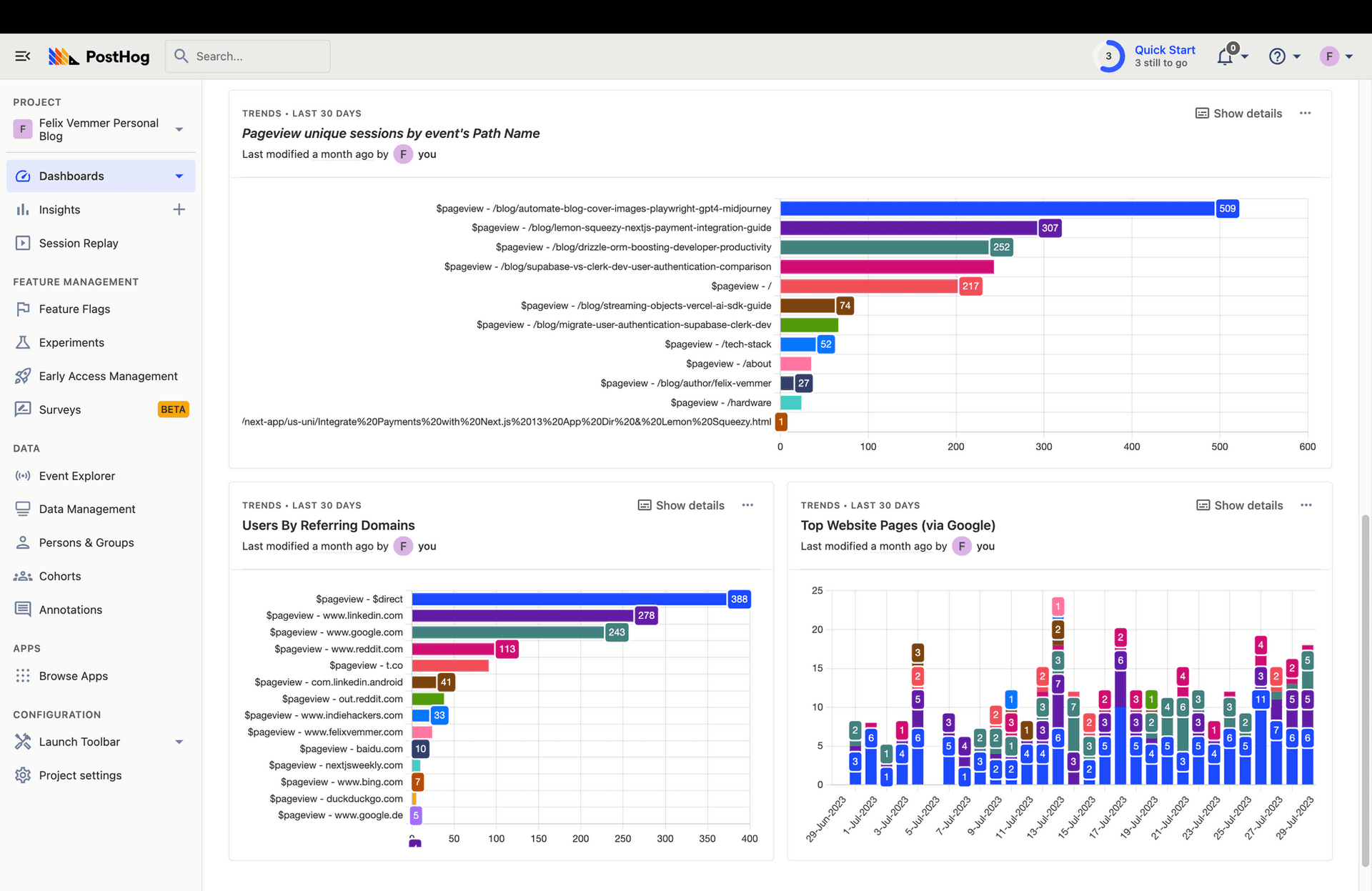
In July 2019, I joined N26 as an 'Operational Intelligence Data Analyst,' stepping into a world where every decision hinged on data. Picture this: a heated debate in a conference room, stakeholders arguing whether to add phone support to plan xyz. Opinions fly, but I knew that emotions and hunches weren't enough. My task? To dive into the sea of numbers, writing SQL queries and extracting factual data that could answer this question definitively.
The result? A decision not based on guesswork, but hard evidence. This wasn't just an isolated incident; it was a daily reality, where I learned that data doesn't just support decisions—it drives them. Whether you're a seasoned entrepreneur or an indie hacker starting your journey, the power of data can be your secret weapon too. And in this article, I'll explore why PostHog might just be the perfect tool to unlock that potential
But don't just take my word for it. Recently, one of my Indie Hacker role models, Danny Postma, was also on the hunt for a solid analytics solution. Initially, Danny seemed quite enthusiastic about PostHog, noting:
However, upon further exploration, it seems that Danny's initial excitement about PostHog didn't quite endure:
PostHog, with its robust features, might not seem like the right fit if you're aiming for simplicity. However, before opting for a simpler solution, it's worth considering why a powerful tool like PostHog is so essential for building your SaaS product. Simplicity can be attractive, but it might not be sufficient as your needs evolve.
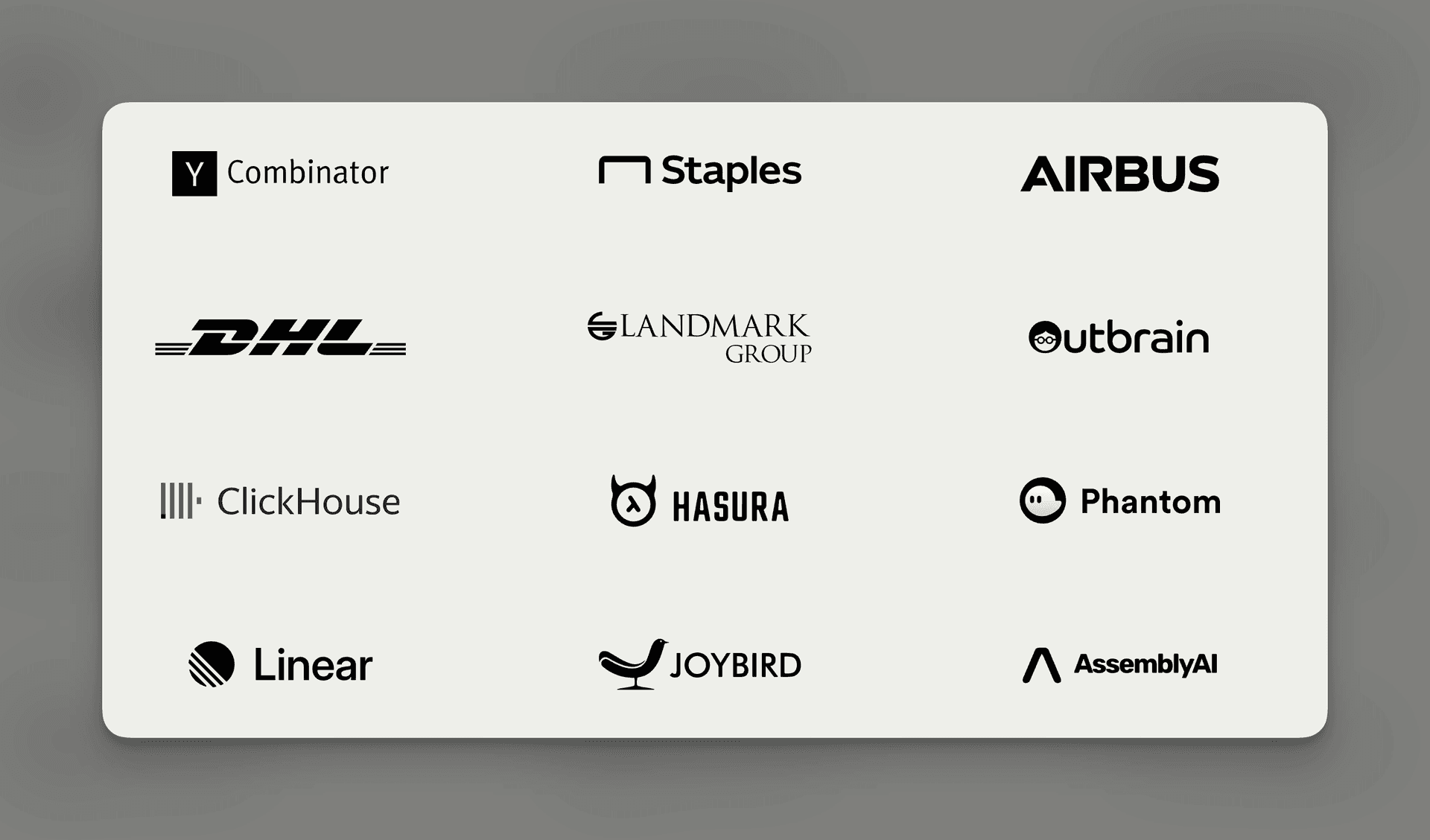
Key Features of PostHog
PostHog's tagline gives us a clear idea of the problems it's designed to solve: it positions itself as the all-in-one platform for building better products - boasting features like product analytics, feature flags, session recordings, A/B testing, heatmaps, and more.
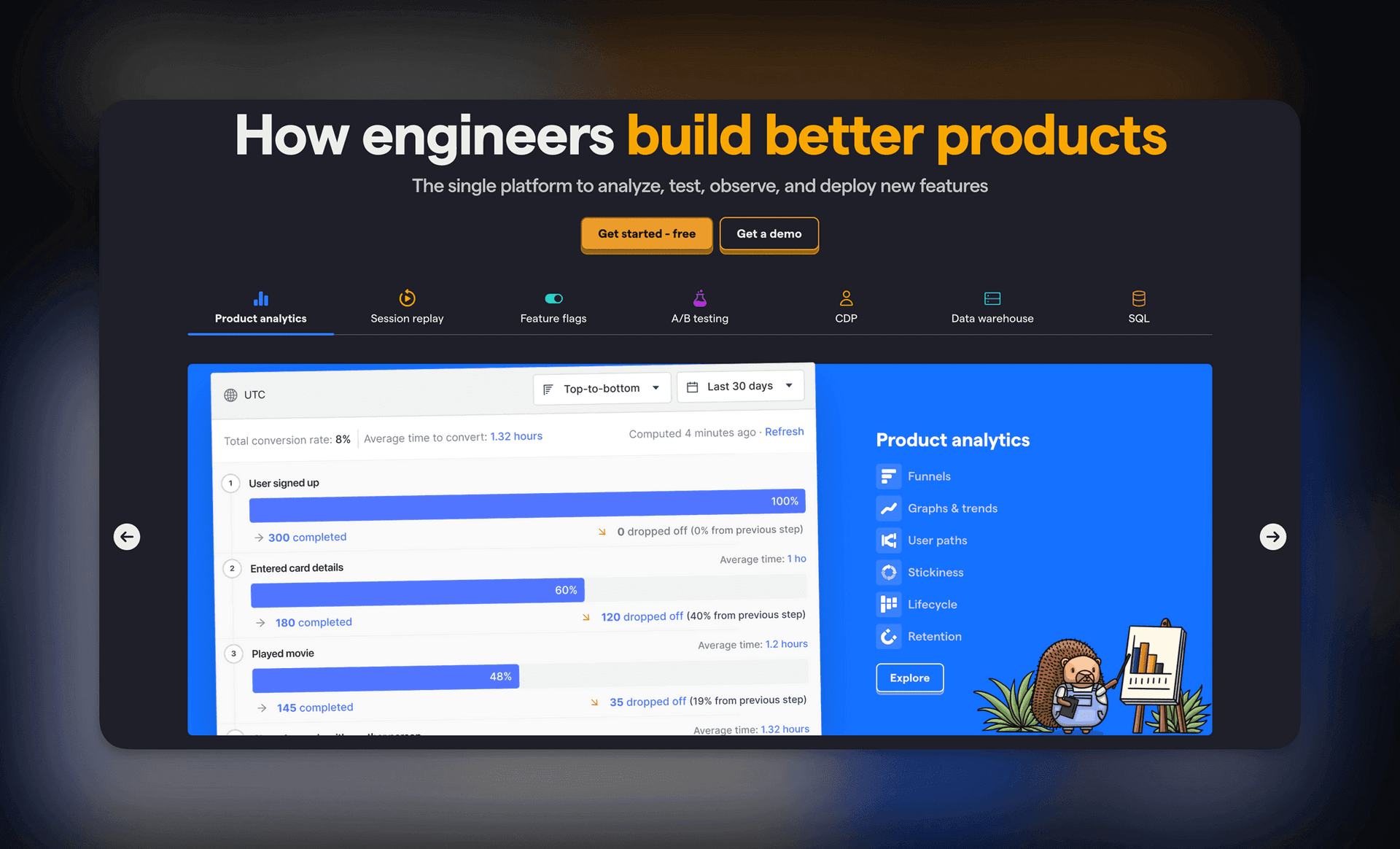
Having experimented with Segment.com, Plausible.io, umami.is, Hotjar.com, Google Analytics, and Google Optimize, I've had a well-rounded experience. I can confidently state that PostHog truly delivers as the comprehensive platform I needed for my SaaS. So, without further ado, let's delve into what PostHog can bring to the table for your burgeoning SaaS.
🍪 Cookies: A Double-Edged Sword
One of the key appeals of Plausible.io and similar platforms is their commitment to privacy-friendly solutions that can operate without cookies. Interestingly, PostHog also offers the ability to function without cookie tracking. However, in my experience, using cookies becomes essential when attempting to fully understand the user lifecycle.
So, where do my users originate from?
UTM parameters and referrer headers can pinpoint the domain a user came from without resorting to any cookies. This is particularly useful for blogs or websites without extensive sign-up or sign-in processes, like this blog.
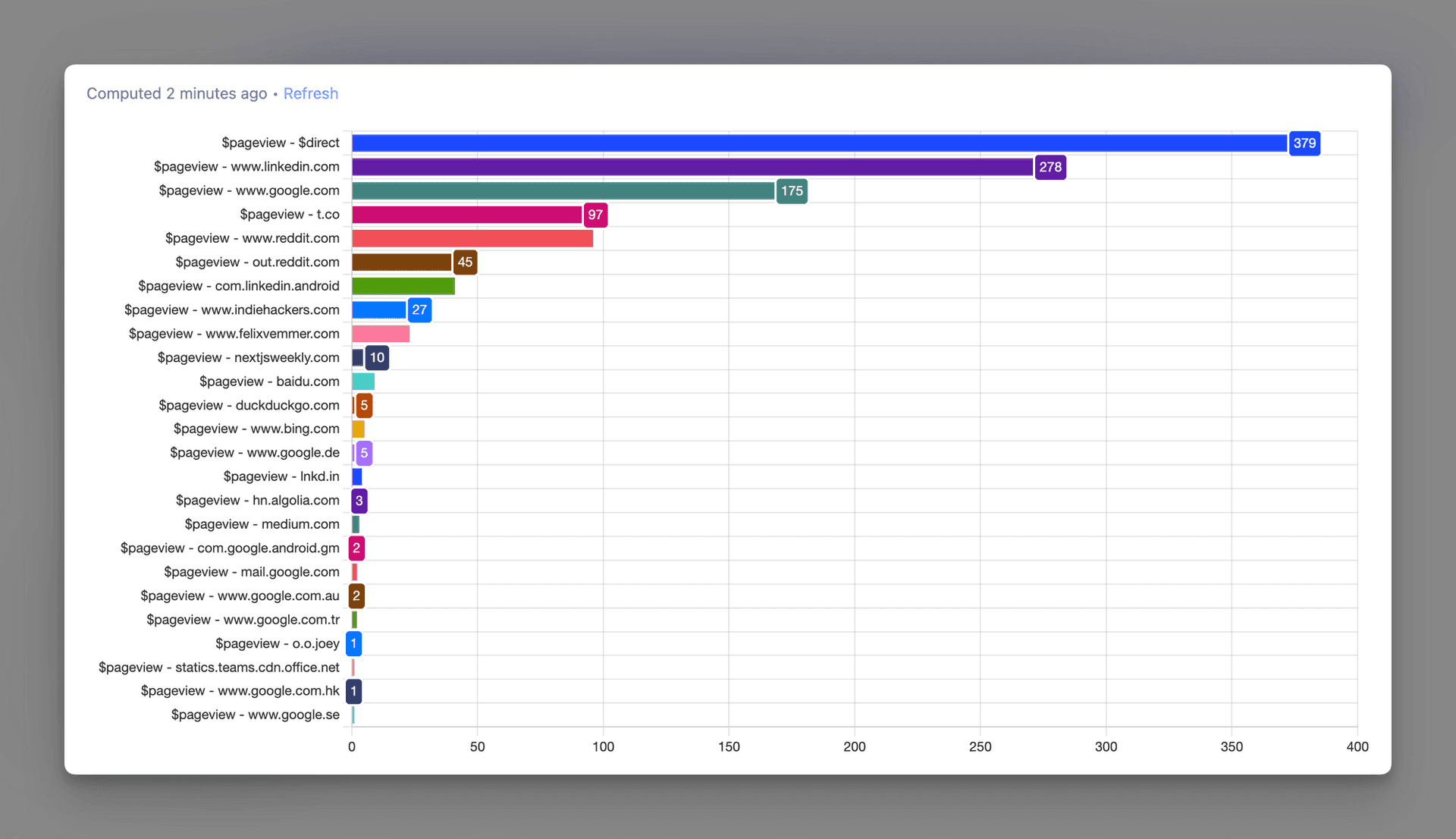
In a SaaS context, it's crucial to identify the best-performing marketing channels that lead to actual sign-ups, not just site visits.
Cookies are instrumental in this process. PostHog assigns a random ID to each anonymous visitor. When they sign up and become identifiable, we can link the anonymous ID to the specific user. This means, with the help of cookies, you can track user engagement across sessions and identify their journey from the first visit to signing up.
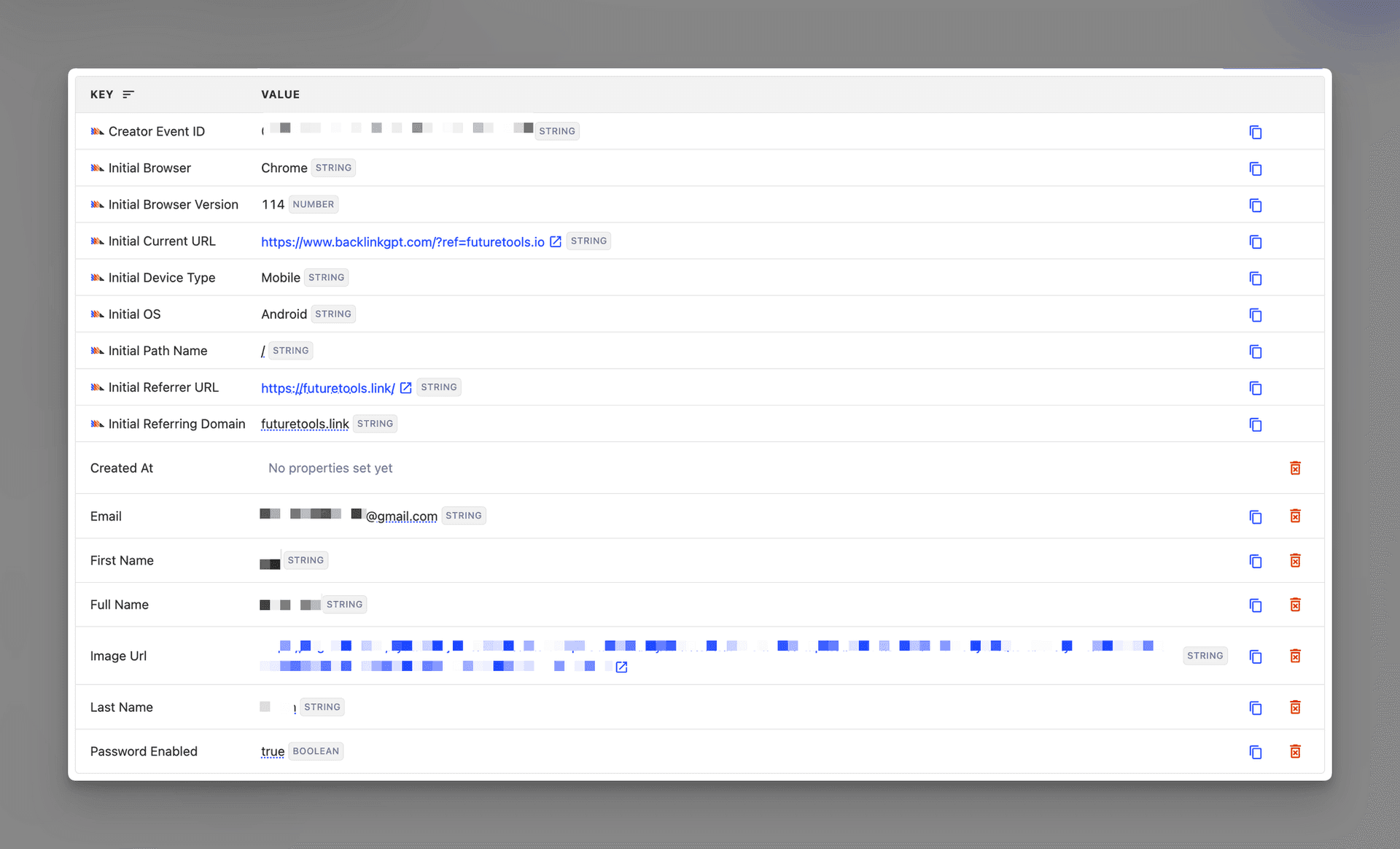
Knowing from which channel a user comes from is the first interesting insight PostHog can deliver. Next let's look at the user journeys.
User Journey: The Power of Funnels
A user landing on a page is only the starting point of their engagement with your product. What you really want is for them to sign up, use the product, pay you, or complete a series of steps to get full use of a key feature. And this is where funnels come in - they are an excellent tool to measure and visualize conversion. With PostHog, you can create detailed conversion funnels, analyze them, iterate on them, and work towards improving your overall conversion rates.
For my SaaS BacklinkGPT I get the following user journey stats:
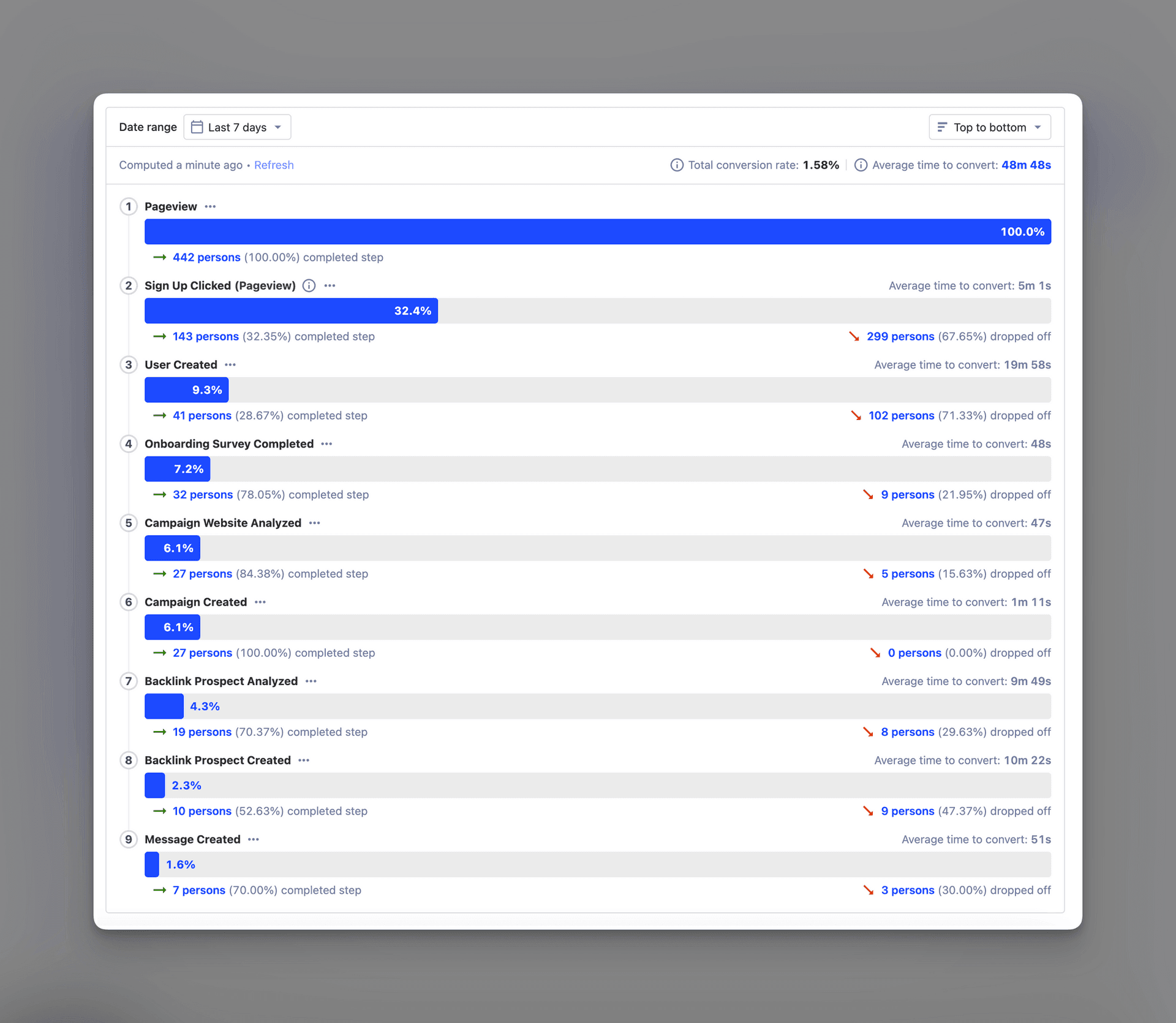
Over the last seven days, 442 individuals landed on BacklinkGPT's homepage, with 143 (32.4%) progressing to click 'Sign Up'. Among them, 41 (9.3%) went on to create new accounts. Notably, the majority breezed through the onboarding survey - an encouraging signal that this step isn't a roadblock in the user journey. However, the challenge lies in the following steps, particularly in identifying high-quality backlink prospects - a task only 19 users (4.3%) successfully accomplished.
This struggle is echoed in the onboarding survey results from the past 30 days, where 51% of respondents (76 individuals) identified finding quality link prospects as their primary challenge.
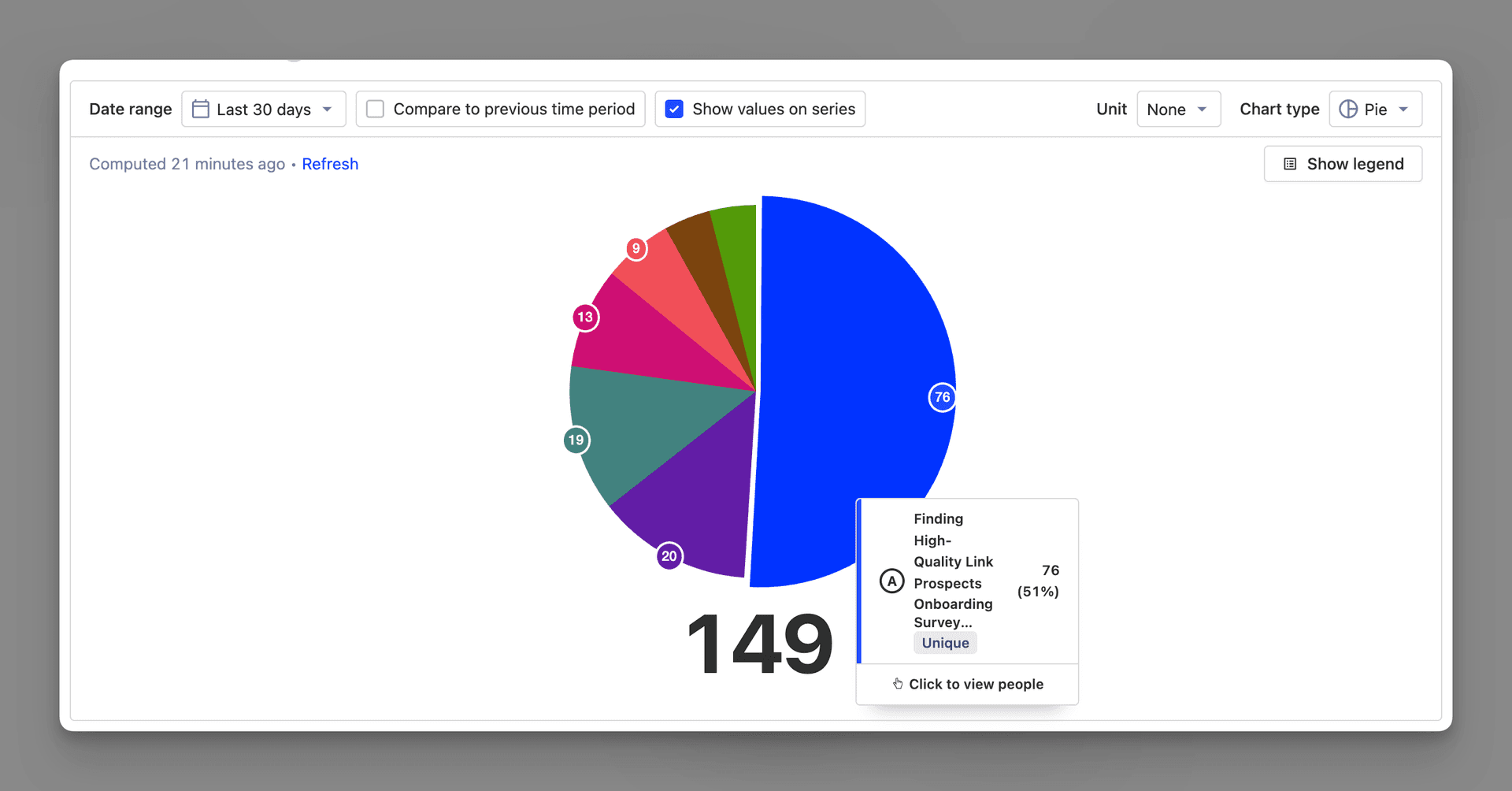
Realising this, I am currently focusing on automating this process end-to-end to enhance the user experience.
Identifying Drop-offs and Analyzing Behavior with PostHog
What's even better, PostHog lets me identify users who dropped off at step 7, the 'Backlink Prospect Created' stage. This is incredibly valuable, as it provides me with their contact information. This means I can directly reach out to them for user interviews, gaining first-hand insight into their challenges.

Additionally, I can also examine screen recordings to understand their click behaviour and detect any potential UI issues. This level of understanding is instrumental in enabling targeted improvements and optimization of the user journey funnel.
Example Session Replay in PostHog
PostHog's Simplicity and Versatility: From Quick Start to Custom Integrations
What I appreciate most about PostHog is its simplicity and accessibility to get started. With just a few steps—copying the tracking snippet into your header and turning on Auto-Capture—you're all set.
PostHog handles the complexity for you, managing everything from the definition of core metrics to the assembly of session data, thereby taking care of the intricate technical details.
But PostHog's features don't end there. Its easy integration with various other apps broadens its utility even further. As a testament to its adaptability, I successfully built my own Telegram Notification Service for core events, illustrating just how versatile PostHog can be:
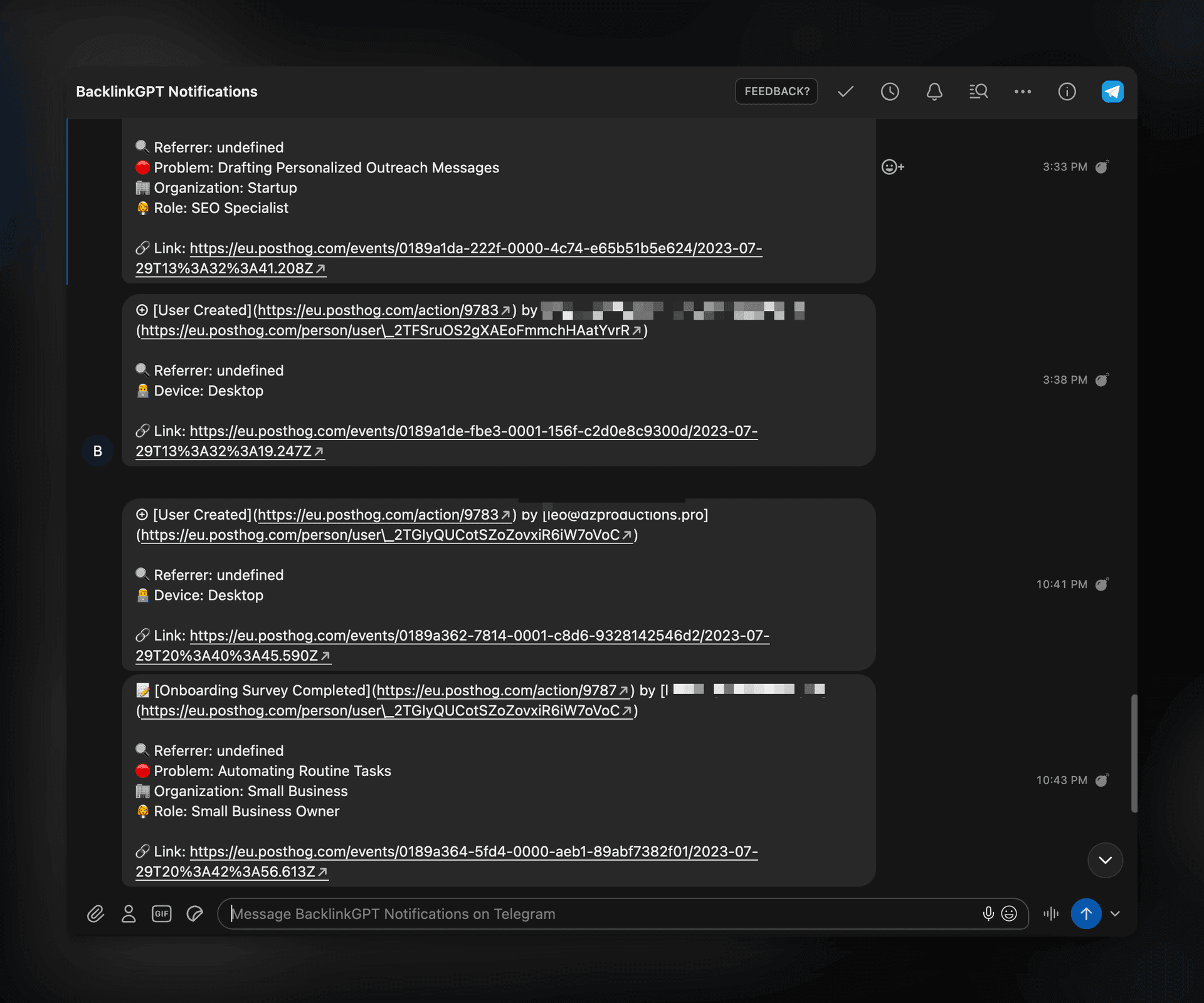
Building this was incredibly straightforward and required just three simple steps:
- Define Core Actions on Events: Utilize PostHog's Data Management to specify the necessary actions.
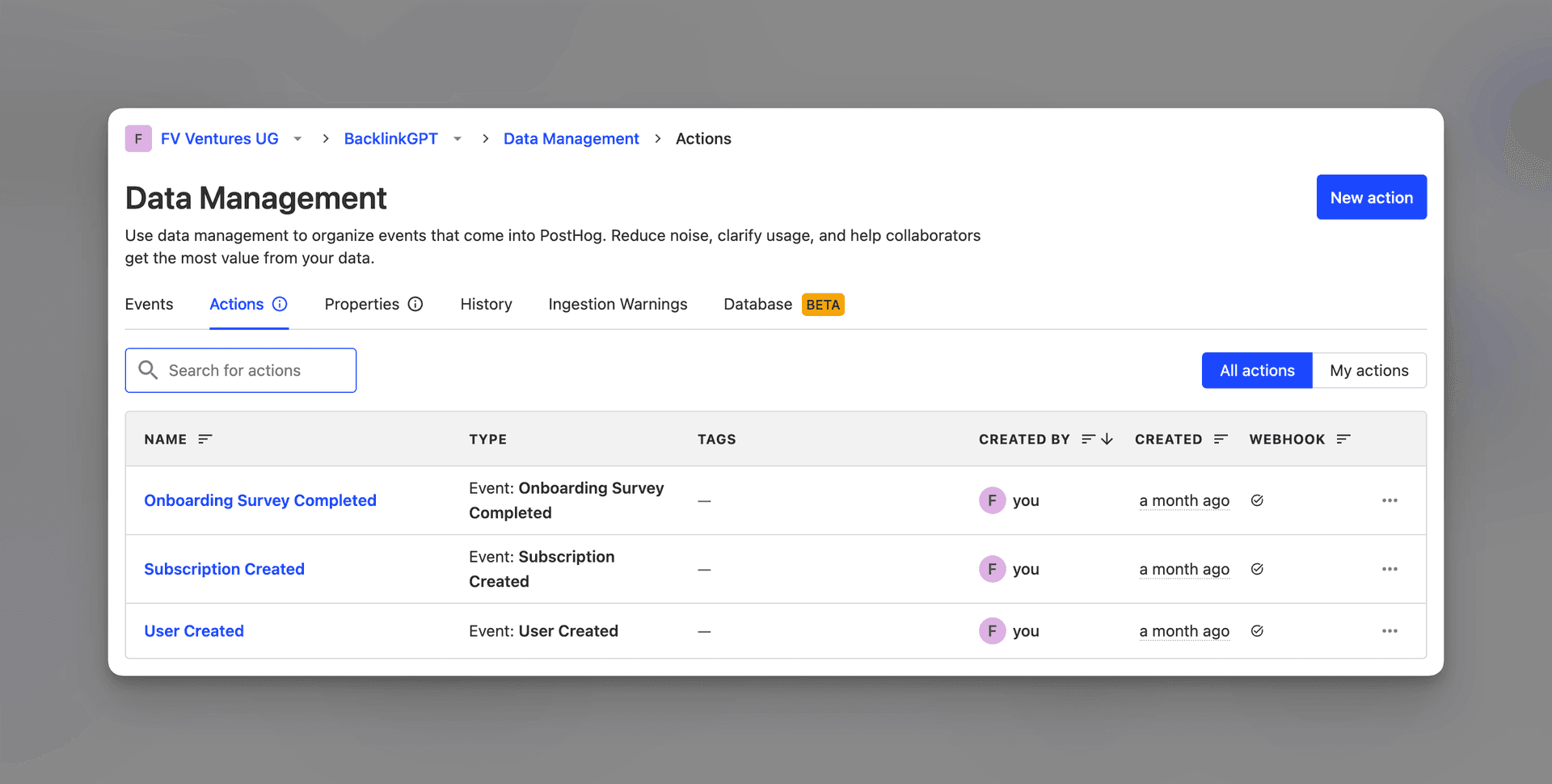
- Set Up the Webhook: Pick an event and draft the message format using PostHog's Webhook Setup.
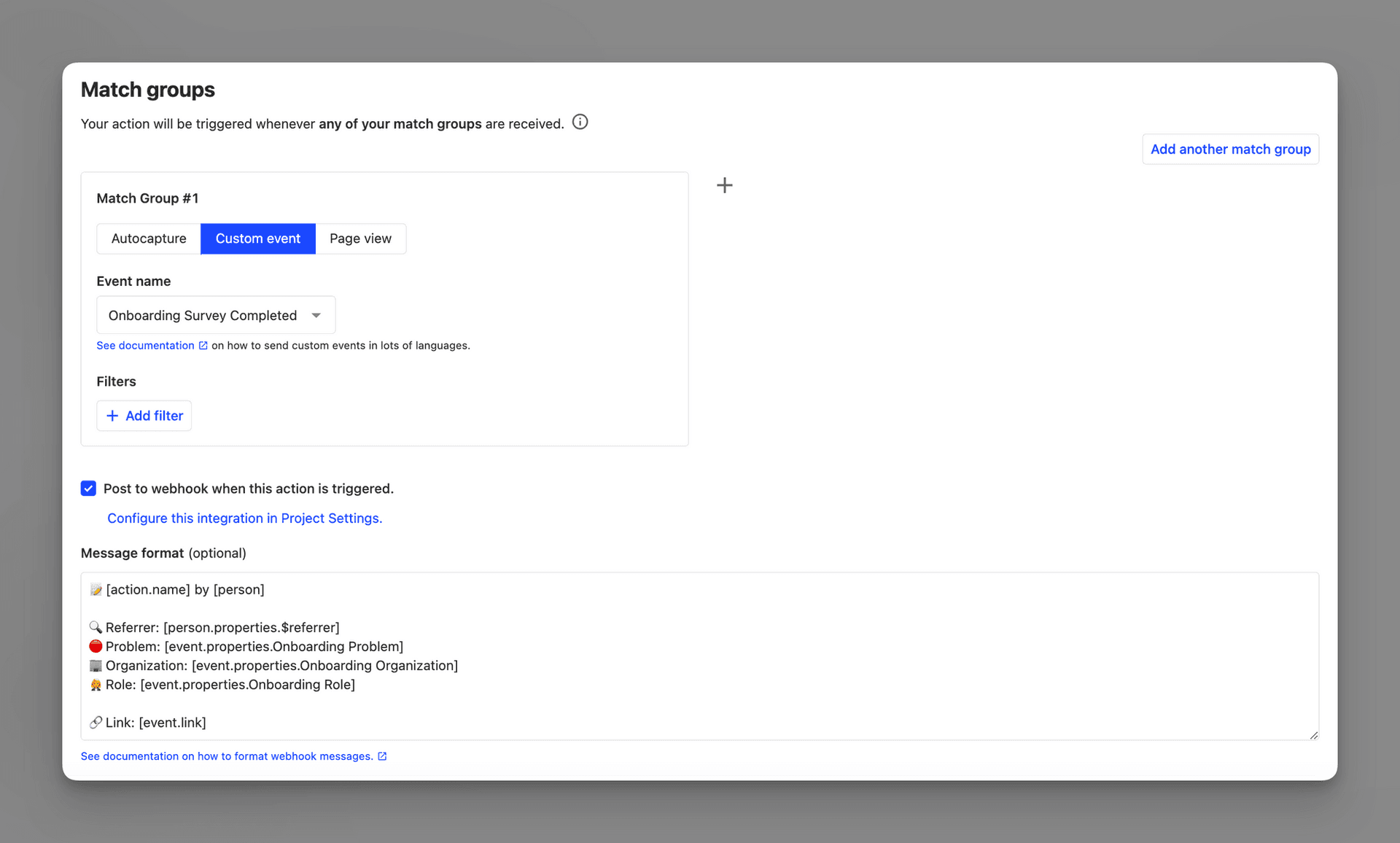
PostHog Webhook Setup
- Configure Notification Logic: With the help of Pipedream.com, create a workflow to connect PostHog to Telegram via Pipedream.

As illustrated throughout this article, PostHog offers an abundance of valuable features and capabilities. I have fully embraced PostHog for all of my SaaS projects, trusting it to help me deliver the best products to my clients.
Beyond its robust functionality, PostHog also provides an impressive collection of resources, including comprehensive guides on product analytics and handy integration tutorials for Next14, most of the updated for the AppRouter.
As I continue my SaaS journey, testing more features such as surveys, A/B split tests, and feature flags, I will keep this post updated with my latest insights. For anyone looking to elevate their SaaS venture, PostHog's offerings are well worth exploring. Check them out here.